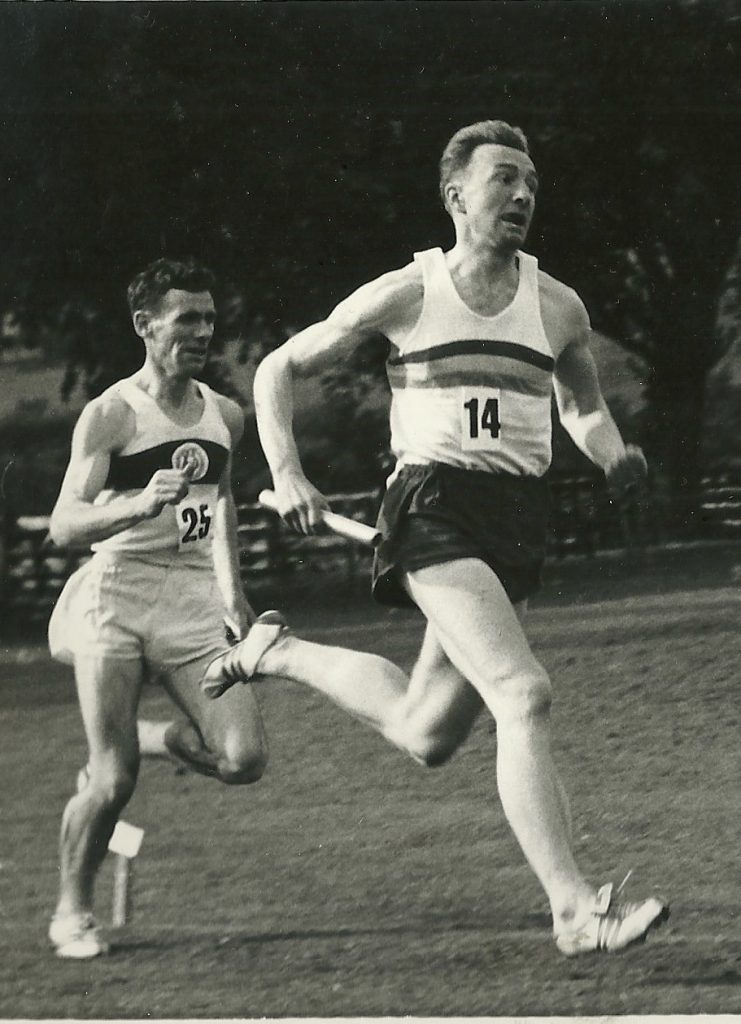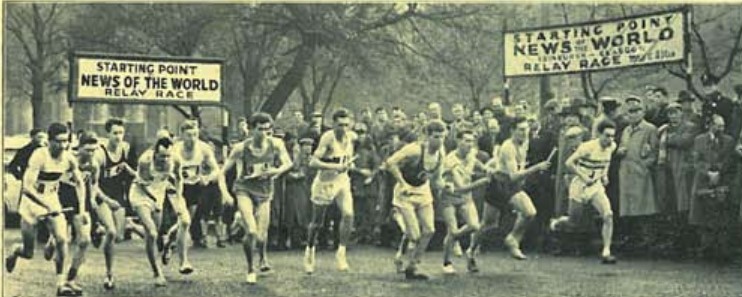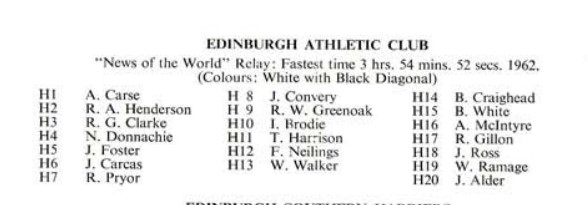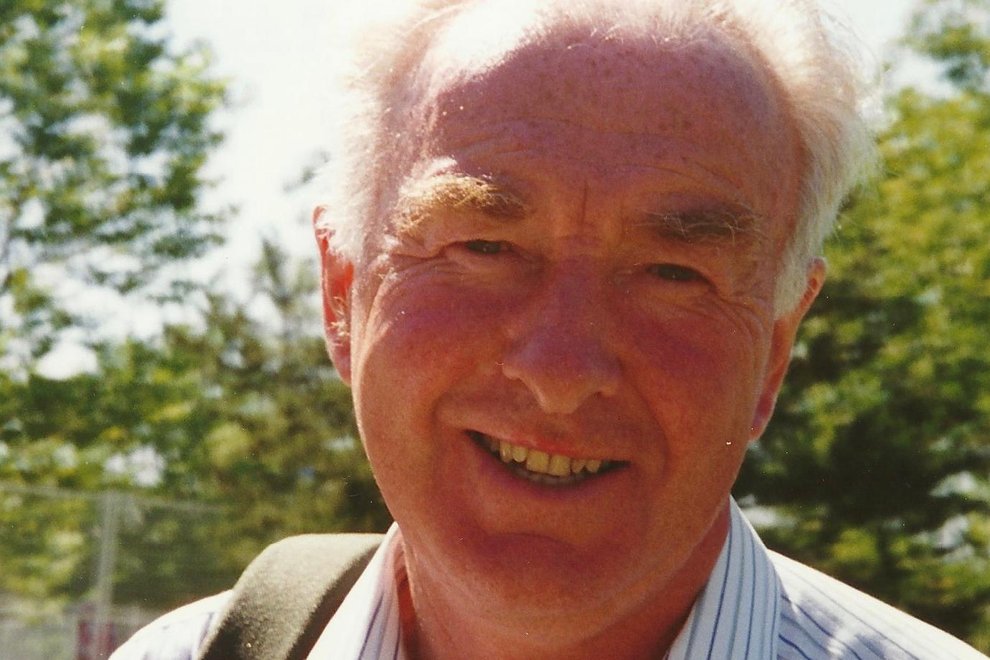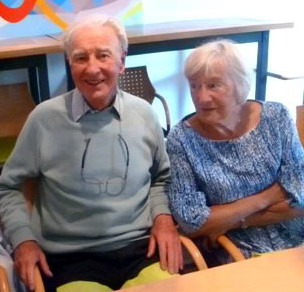Neil Donachie was born on 27th July, 1933 and died on 2nd September, 2021. Runner, official, and administrator at club, national and international level, nothing that aided athletics was ever turned down. He had filled just about every post possible in the Scottish Athletics League over many decades.
He was one of the longest serving members of the men’s league committee – for some time it was Neil as President, George Duncan as secretary and Hugh Stevenson as treasurer and these were probably the golden years of the league –
for a spell in the 1990’s there were five divisions, four of eight clubs and one of varying numbers.
It was also a time when Edinburgh AC had two clubs competing, but with separate athletes for each team
There were annual League v SAAA Select team matches
The AGM in the nineties was always lively with the perennial topic of ‘second claim members’ competing beong debated
Neil was a key figure in all of the big discussions and decisions at the time. He was also the League Representative on the Scottish Athletics Federation Committee after the re-organisation of the sport’s governing body in 1995. Another point of interest is one experience that he shared with Kenny Phillips of Beith Harriers. After success at a British Trades Union competition, in 1953 he was selected to travel to Bucharest to compete in athletics at the World Youth Festival, a pro-democracy anti-war event that attracted 30,000 participants from 111 countries. This was a landmark experience for Neil who from the train en route from Vienna marvelled at the beauty of the Carpathian mountains and the fields of sunflowers and maize while a later visit to the Black Sea was “magical”. Despite evident poverty, he was impressed by the warmth and hospitality of his hosts. You can read more about this Festival as Kenny remembers it at this link . Kenny went in 1957 when it was held in Moscow but it was essentially the same big event.
But we should start at the beginning. Like most officials or administrators in the sport, Neil ran for his club, the Edinburgh Rover Scouts club. This was not a kind of ad hoc group of youngsters who had an enthusiastic officer – it was a properly set up club, affiliated to the SAAA and SCCU after the War with memberes competing in national championships. The well known and highly respected Claude Jones, later Edinburgh AC, was another member in the post-war period. He first appeared in the cross-country results in February, 1950 when he finished 11th in the East District Championships where as a member of the Youths team, he won gold, defeating Edinburgh Southern, Gala Harriers, Edinburgh Eastern, Dundee Thistle and all the rest. In the Youths National that year, he was 31st and last counter in the Rover Scouts team that finished fourth of twenty clubs competing. In the Districts the following year he was 14th and the medal was silver, and in the National the club went one better than the year before with Neil being 21st and the team winning bronze behind Hamilton and Gala. The team won gold in the East Districts the following year but Neil was absent; he did run in the Junior National though and finished 35th with the team eighth. In the National in 1953, the Rover Scouts had become Braidburn AAC and Neil was running for the team that finished fifth in the Senior/Junior race in the District Championships. In the National cross-country championship that year,the Braidburn Junior team that ran at Hamilton was third and won bronze in their first outing. Neil was second scoring runner in 22nd place. In the National in 1953-54, je was first club runner home but the team was down in sixth place. In the East District event in Februray 1954 there was no Braidburn team running but Neil ran as an individual and was 38th. Still a Junior in 1954, he was 34th in the national championship and led the team which finished sixth.
Edinburgh to Glasgow Relay start, 1958: Neil was number C1
Neil was a good, solid cross-country runner who would have been welcome in any club in the land and he also supported his club on the roads. If we look ta his running in the Edinburgh to Glasgow eight stage relay, we note that in 1953 as a first year Junior he ran for Braidburn in their first ever appearance in this pretigious, invitation only, event. He ran on the second stage which is known to be one of the two most difficult stages of the race. Run over six miles, all the top clubs run their top men on it and young Neil lined up alongside, Emmet Farrell (Maryhill), Jim Ellis (VPAAC), Harry Howard (Shettleston), Chick Robertson (Dundee Thistle) and the like that he only dropped three places represents a very good run for a first year junior athlete. The following year, he went to the other end of the race and ran on the eighth stage where he moved the club up from 17th to 13th. with the fourth fastest time of the day on the stage. In 1955 he was on the fourth stage and again moved the club up – this time he picked off two places going from 16th to 14th. We have commented already on the difficulties of the sixth stage and in 1956 Neil was asked to carry the baton over that stretch, the longest stage of the race at 7 miles, he did well to limit the drop to one place being overtaken by Andy Brown of Motherwell YMCA on a stage that included other notables such as Ian Binnie (VP), Graham Everett (Shettleston), Gordon Nelson (Bellahouston) and other top men. He was given that stage again in 1957 and held his place (top men that year were Ian Binnie (again), Harry Fenion (bellahouston), George King (Wellpark Harriers) and Alec McDougall (Vale of Leven). The Braidburn team that day included Bill Walker (third stage), andJohn Hamilton (fourth stage ). In 1958 he was given the first stage to run and he finished down the field in 14th. The club dropped out of the race in 1960 but was back in 1961 and Neil was back on the sixth stage where he kept the 18th place in which he took over the baton. That was the last year in which Braidburn took part in the Edinburgh to Glasgow. Neil had run well in the event – best run probably the second time he was on the sixth leg – but he was by then firmly establiehed as a half miler. In 1964, running for the young Edinburgh Athletics Club which had been formed in 1962, he had second fastest time on the last stage and picked up two places to help the club finish eighth. All stages in the E-G were hard races against good runners but for most of us, the quality of the men on the sixth stage made his run in 1956 stand out. The 1964 team taken from the programme is below and on the day the team in running order was Ramage, Carse, Convery, Carcas, Clark, Henderson, Pryor, Donachie.
It was however as a track runner that Neil is best known. His event was the half mile but he was also a good man over 440 yards and real asset in any relay team. His appearances in the national rankings are below.
| Year | Event | Time | Ranking | |
|---|---|---|---|---|
| 1959 | 880y | 1.54.6 | 6 | |
| 1959 | 1M | 4.25.4 | 29 | |
| 1960 | 440y | 51.2 | 23 | |
| 1960 | 880y | 1.58.0 | 21 | |
| 1962 | 880y | 1.54.6u | 10 | |
| 1963 | 880y | 1.54.2 | 9 | |
| 1964 | 880y | 1 | .56.4 | 23 |
1955 was an interesting year for him. At the end of July he was ranked number six in Scotland over 880 yards with a time of 1:57.2 – which was the same time as John Hume of Clydesdale Harriers. The times were recorded in the same race, the half-mile at the Scottish championships on 23rd June at Meadowbank, and both were in the Final. In a very close finish both men crossed the line apparently together but Neil got the nod, and Hume didn’t complain. Neil won his first national championships medal as a senior.
Later that summer, in the Edinburgh Highland Games he was second in the half-mile. The Games were held at Murrayfield on a grass track with short laps and invitation only international events as well as open events for domestic competitors. In 1955 there were athletes from England, Switzerland, Belgium, Australia and Luxembourg. Neil was second to Mike Farrell of the Midland Counties Select and ahead of J Power from Australia. It had been a good year for him. He continued to race for the club in open competition, in inter-club events, in championships, in relays as well as over the country and on the road in the Edinburgh to Glasgow. One of his stories involved the time he was back marker in the half-mile at the Strathallan Gathering; the race had just started and the announcer announced the back marker as H Cherry of Bellahouston. Helen Cherry was back marker in the women’s event and the announcer had the wrong race before him! In May 1958 at Meadowbank he won the East District Championships he won the half-mile from AB Burns of the Royal High School. His track running was rewarded with another bronze in the SAAA championships in 1959 when at Meadowbank on 27th June he was third in a very good race with Ayr Seaforth’s Jack Boyd defeating Anglo John Wenk in 1:53.9 with Neil third in 1:54.6, ie less than a second back. Prior to that he had been second in the East District Championships. It was a time when the standard in the Districts was also high and Neil went one better than second when he won the East 880 yards from Aberdeen’s Hunter Watson in 1960. 1964 was a good year for Neil who ran well in the Strathallan Gathering on the good grass track in Bridge of Allan on the first Saturday in August when he finished second to Craig Douglas. The season led in to the winter where he had the first rate run in the Edinburgh to Glasgow relay in November.
We have seen that Neil was a better than average athlete on the track, on the road and over the country and he followed this with an even longer spell serving the sport as an official and administrator. By 1980 he had become a Grade 2 Judge for Track and also for Jumps as well as being a qualified Wind Gauge Operator. As a matter of interest Barry Craighead, Claude Jones were also Grade 2 Track Judges at the same time. After serving time on the club committee, he was elected to the SAAA Esat District and General Committees at the AGM in 1981. By 1990 he was an administrator and on the Eastern District Committee representing Western Edinburgh Harriers with Barry representing Edinburgh AC. Why Edinburgh Western? It was basically a way of getting more than one man on to the Committee. For instance, in the West there were three men from the same club on the committee – one representing the club, one representing Lanarkshire Amateur Athletic Association and one representing another club of which he was not a member. It was a way of getting two good men from the same club working for the benefit of the sport. As an official he was by now a Grade 1 track official, he was a step above that as a Field official being a Field Events Referee – Jumps and Throws – a wind gauge operator and a course measurer. Quite a range for any official. By 1995 when the new Scottish Athletics Federation was set up to replace the seven bodies previously responsible for organising the sport, Neil was on the Track and Field Commission as representative for the Scottish Athletics League in addition to keeping all his official qualifications.. It should maybe be noted that administrators and officials fill very different kinds of function – the officials are the people who stand out in the middle of the arena timing and judging on the track, measuring and organising the field events and making the events run smoothly on the day. Administrators are those who are in the background hiring the ground, inviting the officials, providing all the necessary equipment and so on which are required by the officials and the competitors. Neil was able to fill both functions and do it well – working as an official in meetings in mucky fields at a highland games or in an international function such as the Commonwealth Games in 1986 in the decathlon but also as an administrator dealing with all sorts of problems, predictable of unforseen. eg. I have seen him listen to an international athlete incensed at the conduct of his event, talk to him quietly and send him on his way a calmer and nicer person. As an indication of the fact that he was prepared to do whatever his club or the sport needed him to do, look at his work for the Scottish Athletiocs League where, latterly on match day, he was to be found in the officials report room with the team sheets allocating duties to the various levels of official representing the clubs competing that day. No glamour, no drama, just a job that had to be done. The room doubled as the tea and sandwiches room for officials, with each official entitled to, say, a packet of sandwiches, a piece of fruit, and a chocolate biscuit. Neil kept an eye on them too. Some regular officials tried to slip an extra KitKat into their pocket for after, but if he saw them (or rather when heould tell them quite clearly that it was one per official. He also knew who tried to sneak an extra pack of sandwiches into their bag for the journey home after the match too. It meant that there was always enough to go round with a few over.
Neil Donachie gave a lot to the sport over more than 70 years involvement –
- As a runner, he won medals and trophies at club, district and national levels as well as in open and invitation meetings;
- As an administrator he worked on committees at all three levels and was president and chairman of his club, of his district and of the national governing body;
- As an official he worked at meetings from small local gatherings, at national championships and at international meetings..
The following is an obituary written by Jack Davidson. It is a comprehensive, sympathetic, well-written and rounded account of Neil’s career.:
Neil Donachie was a well known, popular and prominent figure in the world of Scottish athletics over many years in his roles as athlete, official and administrator. A versatile runner who competed at cross country, on the road and the track, his forte was the latter where in his main event, the 880 yards, he twice finished third in the Scottish Championships and won the East District title twice. Other highlights included a second place in a high quality invitation race at the 1955 Edinburgh Highland Games at Murrayfield and representing Edinburgh in the biennial contest against Munich.
Over the country he competed regularly in national and district championships while on the road he ran 11 times in the country’s premier event, the Edinburgh to Glasgow relay, achieving the distinction in 1964 of running the second fastest time of the twenty athletes on his leg of the race.
He was President of the Scottish Amateur Athletics Association, Chair of Edinburgh Athletic Club and the Scottish Athletics League, chief decathlon judge at the 1986 Edinburgh Commonwealth Games and a member of the Jury of Appeal at the 1990 Auckland Commonwealth Games, while at the same time making a considerable contribution at grassroots level.
As a 15 year-old he started running with the Edinburgh Rover Scouts Club at Spylaw Park, Colinton before joining Braidburn Athletic Club where he won his first trophy, a cup for cross country followed shortly after by winning the Scottish Boys’ Club mile championship at Aberdeen. After success at a British Trades Union competition, in 1953 he was selected to travel to Bucharest to compete in athletics at the World Youth Festival, a pro-democracy anti-war event that attracted 30,000 participants from 111 countries. This was a landmark experience for Neil who from the train en route from Vienna marvelled at the beauty of the Carpathian mountains and the fields of sunflowers and maize while a later visit to the Black Sea was “magical”. Despite evident poverty, he was impressed by the warmth and hospitality of his hosts. On the track Neil was able to watch his hero Emil Zatopek as he himself had the thrill of warming up alongside the Russian great, Vladimir Kuts, with whom he claimed to be on “nodding terms”!’
On leaving school at 15, Neil attended the Edinburgh School of Building, taking the first steps in a successful career as a building surveyor with various organisations. His first job was as apprentice painter and decorator after which he attended night classes at Heriot-Watt College, later studying for a Higher National Certificate in Building.
Before that he undertook National Service in the RAF. based at Turnhouse Airport, Edinburgh where he met lifelong close friend and running rival Jack Boyd, one time 880 yards Scottish record holder. Neil and wife Marion would spend many happy times together with Jack and wife Jess at Culzean in Ayrshire where they enjoyed the use of an old boathouse for breaks, with the men training in the lovely Castle grounds.
Neil married Marion Macaulay at Harwood Church, West Calder on 30 January, 1960 and enjoyed over 61 years of happy marriage together during which they had son Andrew. Marion was also an accomplished athlete who later became an official, with much of the couple’s life revolving round athletics events where their presence and contribution was always highly appreciated. Another interest they shared was walking holidays many of which were spent happily at Oberau in Austria while they also made several trips to Australia to visit old athletics friend Bert Carse.
Initially they lived in Corstorphine and East Calder while Neil was employed by local councils. The couple then moved to Hamilton when he secured a post with Strathclyde University before moving back east to Currie when he began employment with the Scottish Institute of Agricultural Engineering at the Bush Estate, Roslin after which he worked for a period with Scottish Homes before retiring. In his working life he was professional, highly thought of and dedicated.
Central to his life was his love of athletics, the many friendships it afforded and the opportunity for travel. He competed in Toronto in 1975 in the first World Masters Championships, visited many athletics venues throughout Europe, and attended Commonwealth Games in Auckland in 1990 and Victoria in 1994.
His personal qualities were recognised in the important positions to which he was appointed, bringing to them his integrity, experience, encouraging and gregarious nature as well as his passion for athletics at all levels. An extremely likeable gent and excellent company, he enjoyed a long life well lived.
Neil and Marion Donachie
